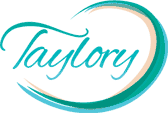Do you ever find yourself feeling bamboozled and at a bit of a loss when a potential client asks you to send them a proposal?
There can be so many tricky questions about quotes or proposals can’t there?
How do you know what to put in there?
How do you make yourself look fabulous and professional?
How do you create something compact and simple, and yet cover every possible detail in the universe so that the client is desperate to sign with you?
So, I thought I would share some tips with you today about how to create a great proposal that works on your terms; that’s really simple, and that actually makes it much more likely that your potential client is going to say yes.
Now it may sound contradictory, but my first piece of advice on this is to avoid proposals like the plague if at all possible!
I can honestly say that I probably issue around one proposal a year and that’s when somebody approaches me to do something that’s quite different to my standard coaching packages.
Whereas, if somebody wants to talk to me about my core services then there is simply no way that I would issue them a proposal, because I know that a proposal actually makes it far less likely that they will come on board.
Because a proposal eliminates the emotion and the relationship from the situation.
It’s very black and white. It’s very logical and more often than not it draws the customer into making a very price-driven decision.
So when you send somebody a proposal, the price is something they’re going to really hone in on.
Whereas, while you’re in conversation with them, the price is an aside to the whole conversation (because you can make it that way) and the relationship that you’re creating, the way that you prove that you really understand their needs, the connection that you’re building, all of that will be much more significant to them in that situation than the price.
So proposals really focus on price, whether that’s your intention or not. But I appreciate that if you are regularly dealing with larger businesses or if you deal with clients who like to make decisions by committee, maybe they need to run it by their management team, or by their board, then it may be that some of your clients do insist on a proposal.
So if they do, then here are my key tips on how to keep things really simple and create a proposal that works for you.
Step 1: Make it about them, not you!
The first thing to bear in mind is that the point of a proposal is to provide your potential client with clarification and to create certainty, to enable them to make a decision. It’s not actually to sell!
Where a lot of people go wrong is trying to pitch everything about their business. There’s practically the whole ‘about me’ page from their website in there and it often talks about qualifications, and credentials, and how long they’ve been in business, and blah, blah, blah, blah,
And to be brutal, your customer’s not interested in that! By this stage, all of that should have been covered already during your initial conversations or meetings with the customer.
All of that stuff about who you are, why you, whether you can help, that should all be dealt with a long way before a proposal. All the elements of building a relationship and developing trust, they can’t be done via a black and white proposal so that really needs to be done verbally.
So the proposal is just for clarification and certainty.
Which means that it doesn’t need to be enormously long and it doesn’t need to actively sell you.
What it should do, first of all, is prove that you have very thoroughly listened to the customer. The proposal is actually for their benefit, not yours.
So the first thing that you should focus on in any proposal is, “here is what you said you need”. You’re basically proving that you’ve listened to them, that you give a monkey’s, you actually care about the customer, you’re genuinely interested in them, and you can clearly see what they need and why you’re the person to help.
Focus on them first!
Then you need to make sure that you focus on the fact that your service is going to perfectly match their needs, their requirements, their pain points, as you might call it.
Make sure you get all of that across … “this is the issue that you’ve got at the moment, this is how we solve it”. But don’t just list all of the details of what you’re going to deliver. It’s not about how many hours of your time and how many days, and the specifics of the nitty-gritty of what they get.
What you need to focus on is what’s the impact of what they get? What difference is this going to make? What value is this going to add to their company, to their life, to their business?
Focus on the value, not on the basis of what you deliver.
It’s the value that customers truly cares about.
Step 2: Create a template
My other core piece of advice is to turn this into a template.
You may need to keep adding to your template each of the first few times you create one, but eventually, you should have the key components of great template in place so you don’t have to start from scratch every time.
It’s incredibly easy to get bogged down with proposals and find that you’re spending anywhere from 45 minutes to several hours every single time you’ve got to create a proposal when realistically 80 to 90% of any proposal should be absolutely the same every single time.
Because once you’ve written this in the best way for you, why would you not keep repeating that?
There should be 10 to 20% of the proposal that relates specifically to that client. You know – the part about “these are exactly your needs, this is the impact that we will have on your business”, that needs to be different each time.
The price potentially needs to be different each time too. But everything else in that proposal should be a template so that you’re just dipping in there and quickly changing the key sections each time.
That will potentially save you a huge amount of time.
Step 3: Keep it short
Once you have your template in place and it’s focusing much more on the customer than on you, and you’re making sure that you’re building trust in advance of that through conversations; then your proposal really doesn’t need to go into a wealth of detail about your company history, your personal background, and things like that.
To be perfectly frank, customers just get bored of that!
If you think about anything that you receive that you have to read … we love short, simple, punchy, straight to the point.
So keep it nice and short.
Step 4: Let your personality shine through
It’s very easy to think that a proposal has to be very neutral, very professional, very corporate, very vanilla, but actually it’s YOU that the customer really wants to work with!
They want to know who you are, they really want to know what you’re all about. They want to know that you’re a good fit with them, they want to know what your ethics are.
So make sure that your personality and your brand come out within that proposal.
That might be as simple as consistently using the colours of your brand throughout.
It might be in the language that you use, it might be by making things a little less formal, but just think about getting your personality out so they absolutely know this is a proposal from you. What they see there should match what they got and what they felt when they were sat with you right in front of them.
So those are my tips: When it comes to proposals, avoid them like the plague if humanly possible.
If you have to issue proposals, keep it short, focus on the customer, template it as much as humanly possible, and don’t be afraid to let your personality shine through.
I hope that that has been helpful. If you find that sales in your own business are a real challenge and you’re constantly issuing proposals and yet not turning these people into real customers, then get in touch and let me see if I can help you to actually close a lot more of those potential sales in your business.
I would also love to hear your feedback so leave me a comment below. Don’t forget to like, or to subscribe, and of course, feel free to share it with anybody else you think would benefit.






